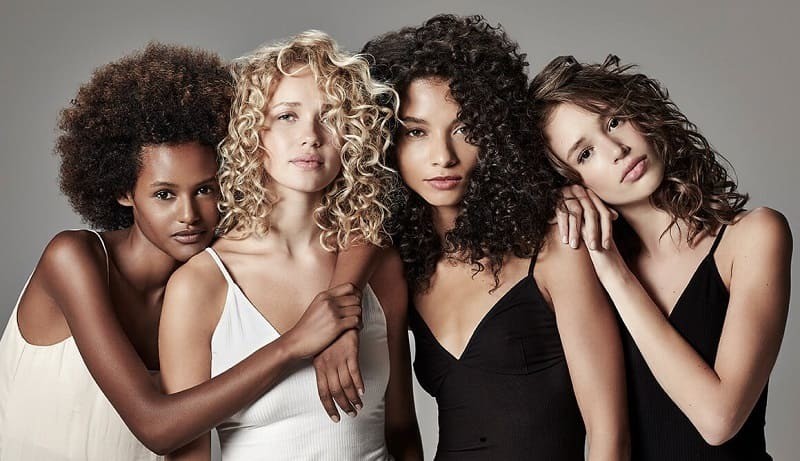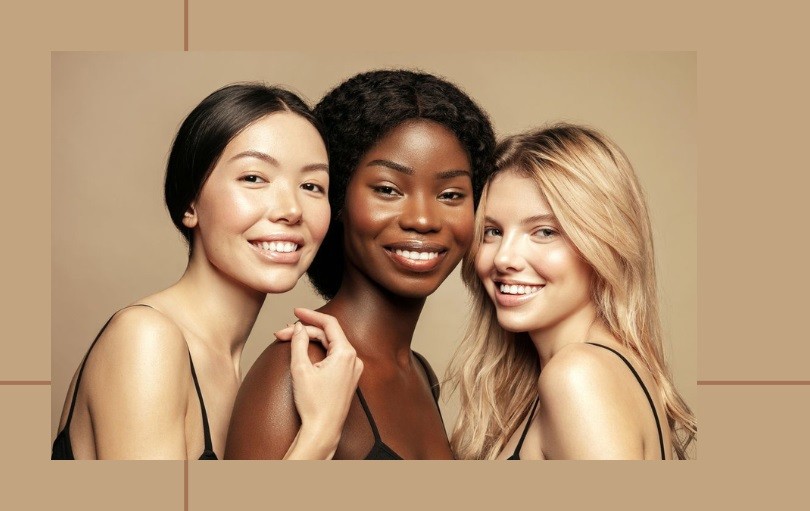Last Updated on March 28, 2025
Knowing your hair type is very important because it gives you pointers on how to take care of your hair. You will be able to buy the right products and styling tools for your hair type and make hairstyles that are most flattering for your hair type.
Identifying your hair type is not a straightforward thing for many people. So, it would help if you read these guidelines closely to identify your hair type correctly.
Type Of Hair – How To Determine Your Hair Type?
There have been different classifications of hair types. But one of the most popular and widely used is the one generated by Andre Walker in his book; Andre Talks Hair.
Hair Type 1
That is a broad category for straight hair. This kind of hair does not present with curls naturally. There are sub-categories under this type which include:
Type 1A – If your hair falls under this type, you would have straight hair that is very light and lacks volume. Your hair may also have a natural sheen even without the addition of hair products.
Type 1B – This hair type has more volume than Type 1A even though it is also of a fine texture.
Type 1C – This is the type with the most volume and it often has a rough look and it’s more challenging to achieve a curling style with it.
Because Type 1 hair is straight, it tends to be oily as the natural oils in the scalp can move faster onto the strands.
Here are some tips on caring for Type 1 hair:
- Due to the greasy nature of Type 1 hair tends to get dirty faster so you will have to wash your hair frequently. It would be best to go for light shampoos and conditioners that will not leave too much oil in your hair as that would only get it dirty faster.
- Many people with Type 1 hair often assume they have limited styling options, but that is not true. You can attempt various styles using the right products to give your hair hold, and you can even get an excellent cut. However, the key to having a beautiful haircut with straight hair is cutting it in layers. That will give the hair volume and make it look bouncy.
Hair Type 2
Type 2 hair is usually wavy and neither too dry nor oily. The waviness gives the hair a thicker look than Type 1 hair. Type 2 hair is also divided into 3 sub-sections:
Type 2A – This hair type is also relatively thin, and the waves tend to be more visible towards the middle to the tips of the hair.
Type 2B – This type is thicker than 2A, and the waves tend to follow the shape of your head.
Type 2C – This is the most coarse of the type 2 hair. It gets rough quickly and has to be styled or combed frequently to keep it tidy.
Type 2 hair has a specialized hair care routine because the hair tends to lose moisture quickly.
Here are some tips for you:
- Your hair-washing routine should include moisturizing shampoos and conditioners. You should avoid products that strip moisture from your hair.
- When blow-drying your hair, you should apply caution, especially regarding the heat setting. If you set it too high and keep it too long on your hair, you will have stiff and dry hair. Using a moisturizing cream or leave-in conditioner after the drying will help regain the hair moisture.

Hair Type 3
That is the curly hair type. It is the easiest to identify because the curl pattern differentiates it from other hair types. The 3 sub-categories are:
Type 3A – The curls in this type are not tight and have a loose, almost wavy pattern. The hair also has a shine to it.
Type 3B – This type has a tighter curl pattern in the shape of spirals or ringlets
Type 3C* – This type has an asterisk because Andre Walker did not identify it; it came about from people trying to determine their type and finding it does not fall between Type 3A or 3B. Hence, Type 3C has the tightest curl pattern that looks like coils or a more vivid example is the old-school telephone cord but smaller.
The hair routine for Type 3 hair is similar to that of Type 2, but there is a little difference.
- Type 3 hair also needs a great deal of moisture to keep the hair looking healthy and stylish. So, you should invest in quality shampoos and conditioners.
- You should avoid heavy hair oils as they would only weigh down your curls. Light oils like jojoba, argan, and grapeseed are suitable for this hair type.
Type 4
Type 4 hair is found in people of African origin, and it has the tightest curl pattern. Although the hair is offered as coarse, it also actually has light types. It all just appears thicker because the hair strands are packed tightly together. The sub-types include:
Type 4A – This is the type with the most beautiful strands and tightest curls. When it is wet or stretched, it looks almost like a Type 3.
Type 4B – The curls in this type are not as defined as in the 4A and it tends to have more volume than 4A.
Type 4C – Just like the 3C, the 4C type was later identified within the natural hair circle. It is often considered the most challenging type to manage as it is very thick and tends to lose moisture quickly. It has no defined curl pattern.
The hair care routine for Type 4 hair might seem a bit busier than other hair types, but it gives you a fantastic experience when followed.
Here are a few tips:
- Avoid harsh and drying shampoos if you leave your hair natural. Moisturizing shampoos and conditioners are also suitable for this type.
- Using relaxers might make your hair more manageable, but you should weigh the disadvantages against the benefits.
- Wearing a protective hairstyle is recommended against leaving your hair flying free all the time.
In the end, one hair type is not superior to the others. You can make good out of any kind you have by following the best routines.

